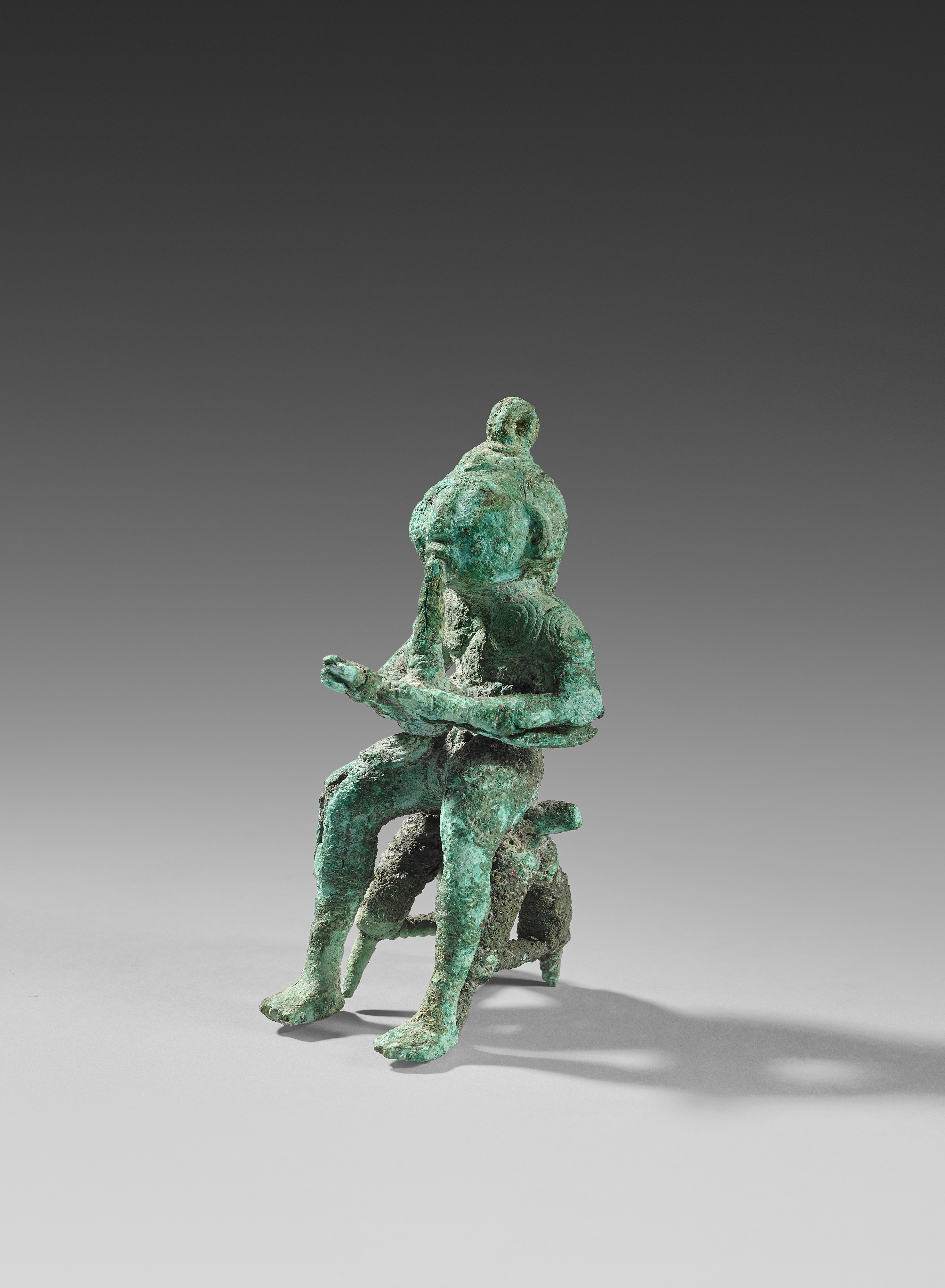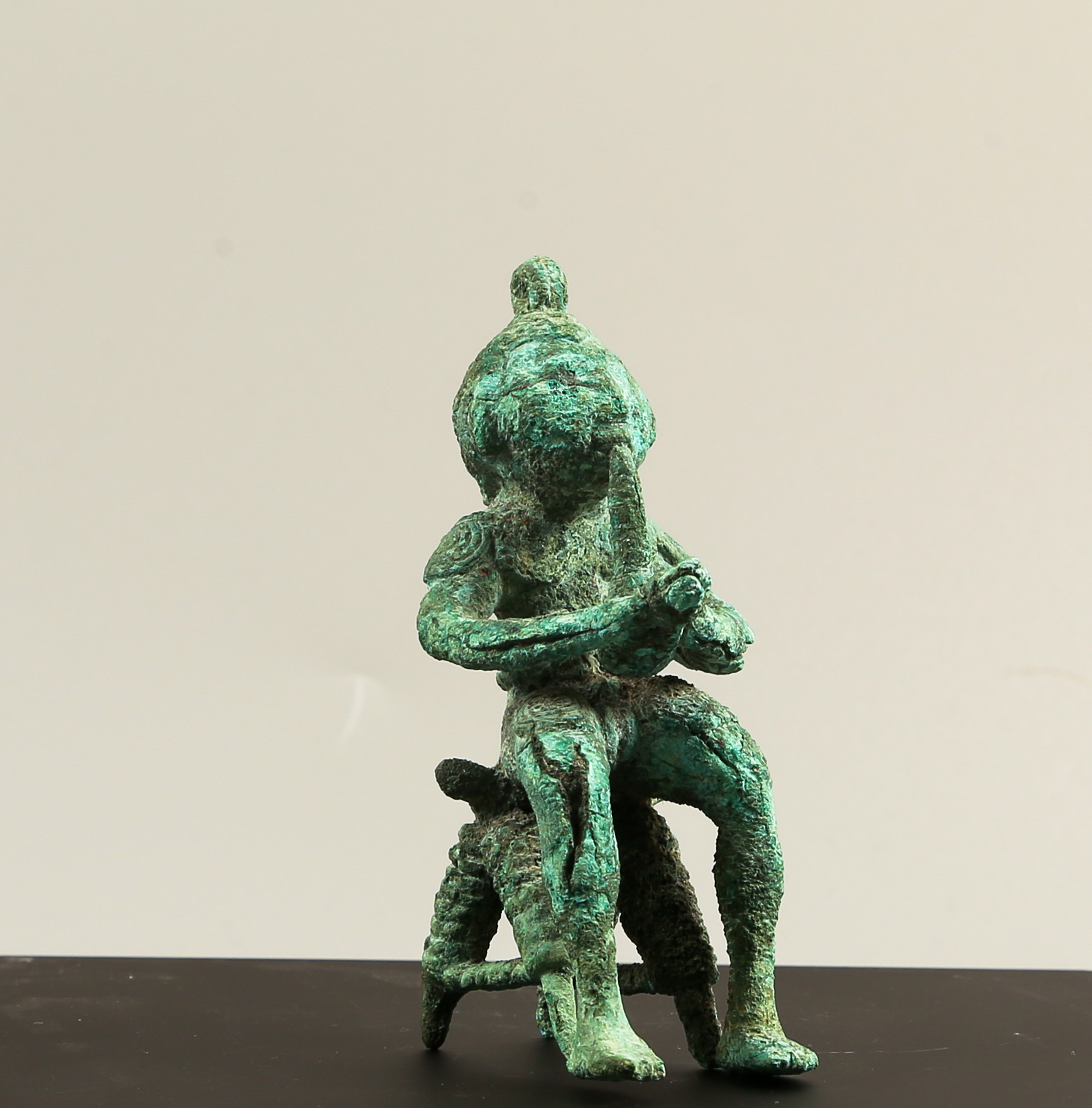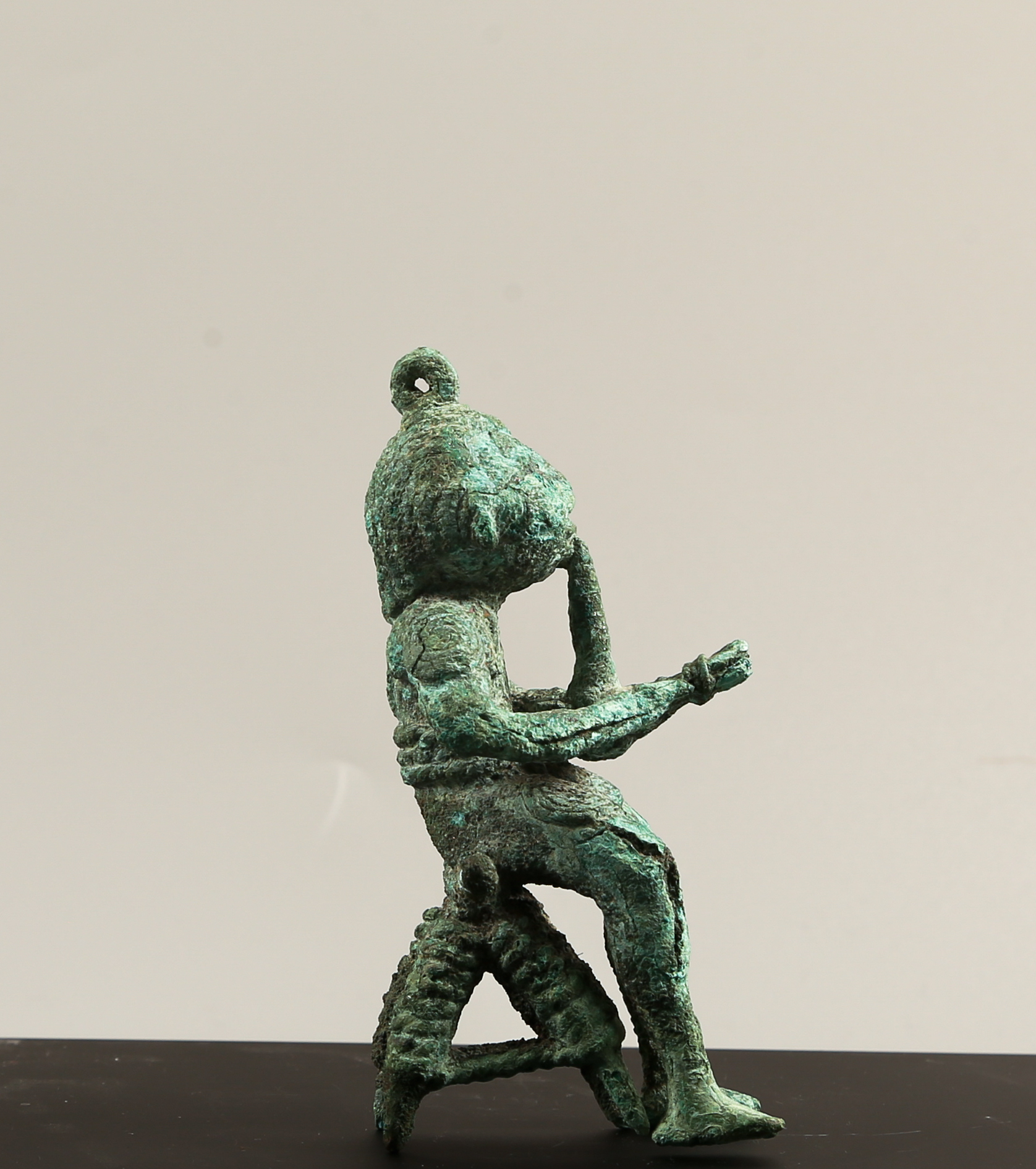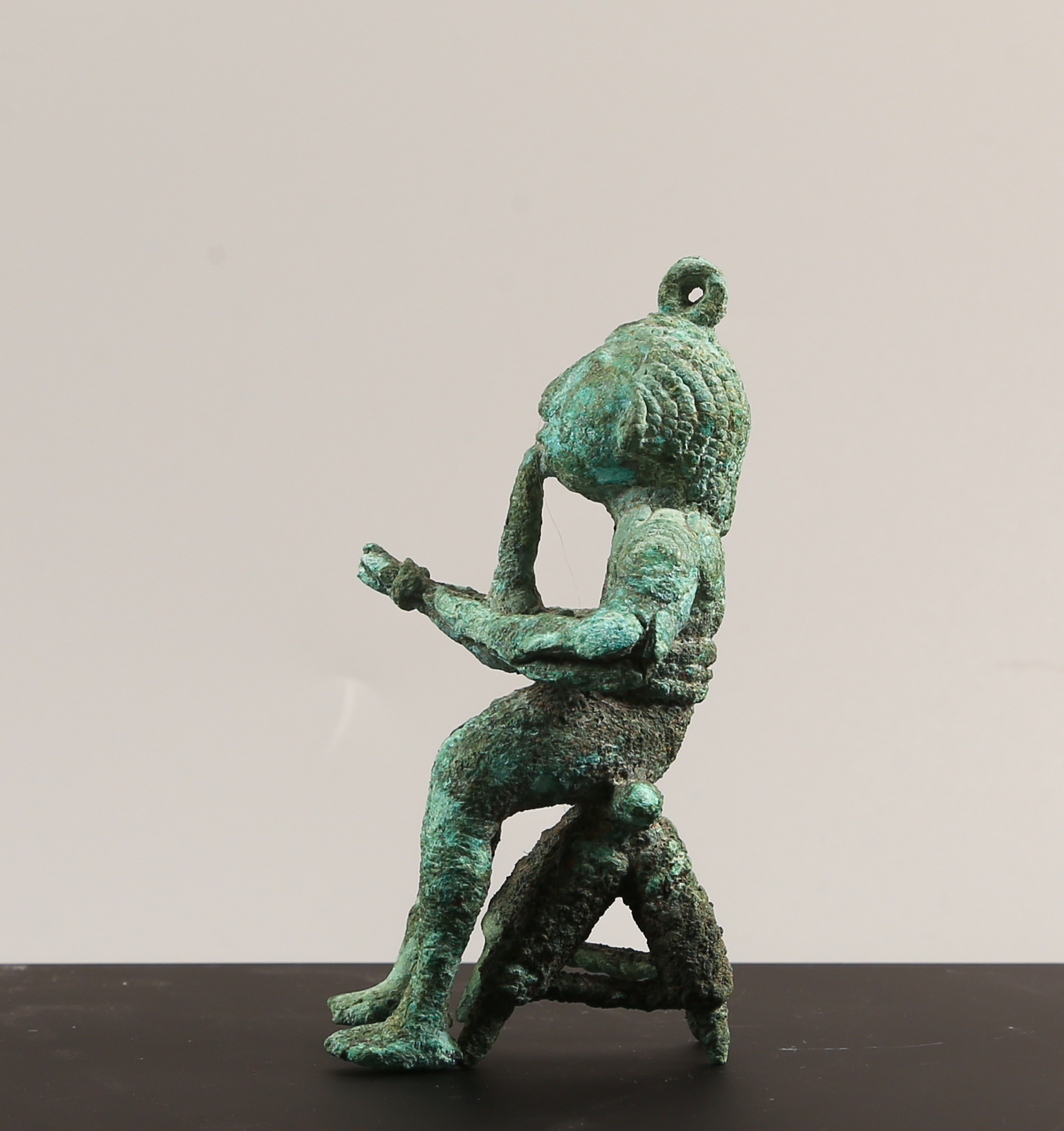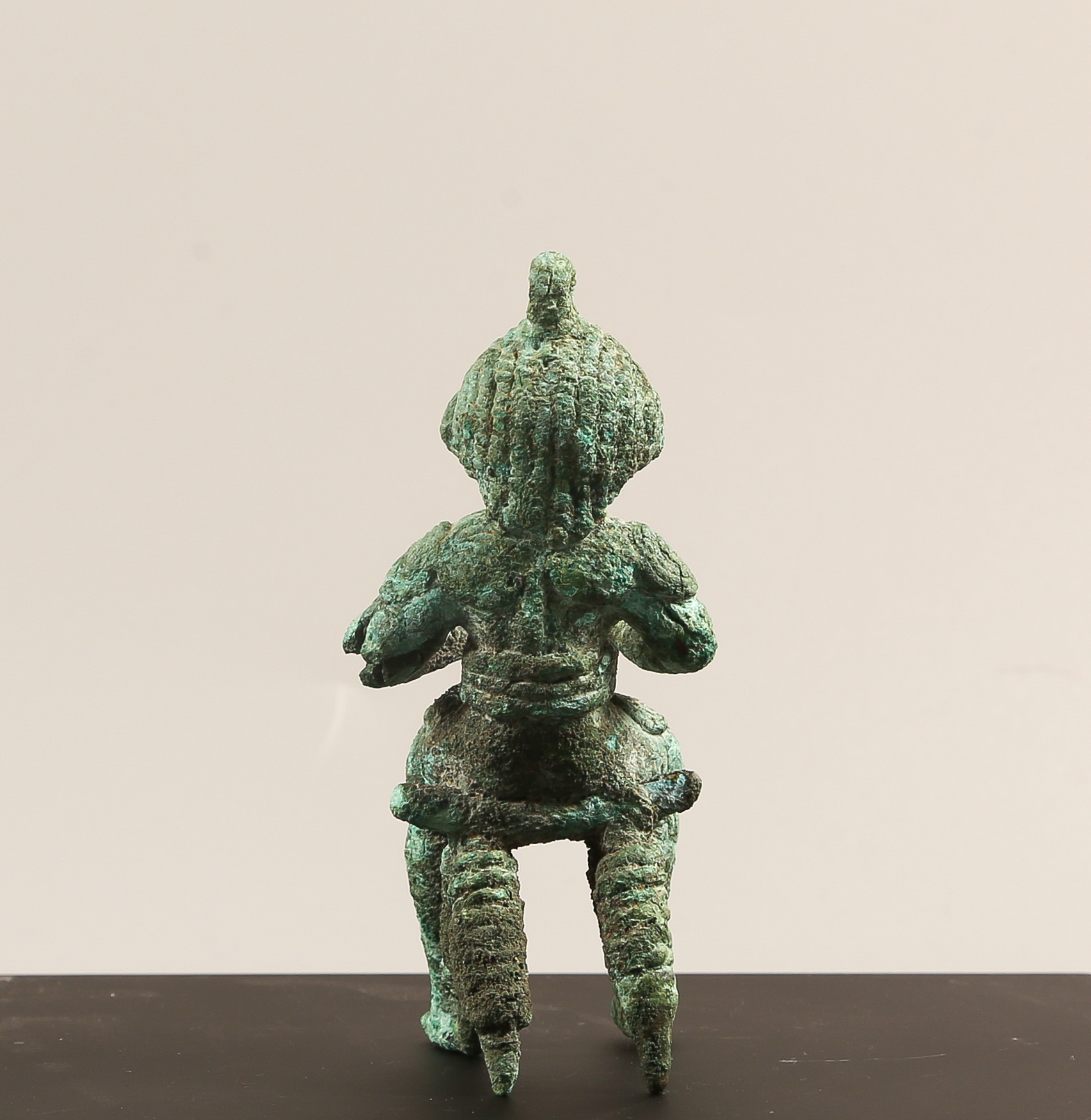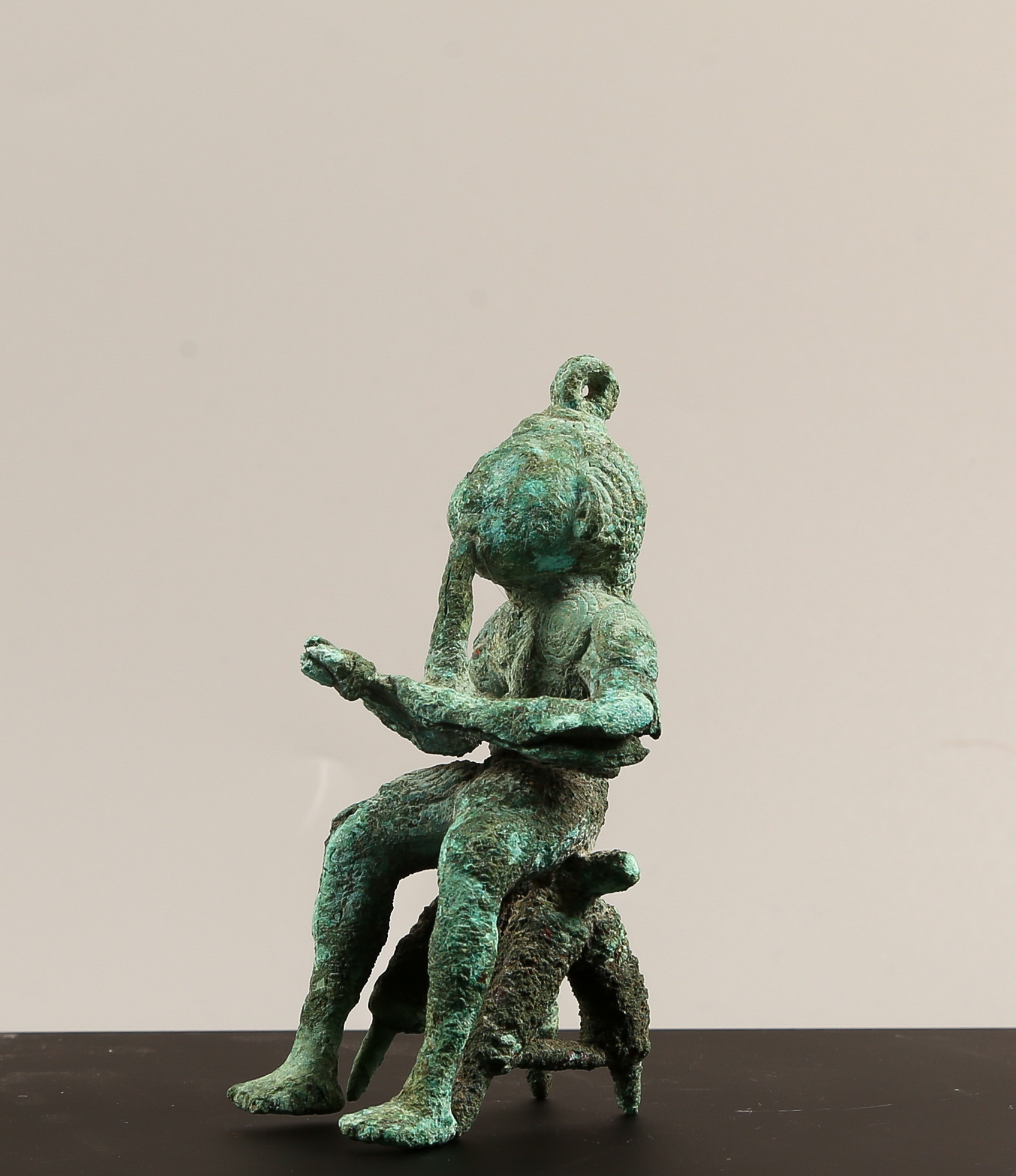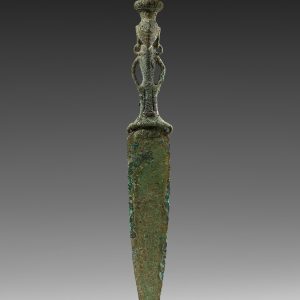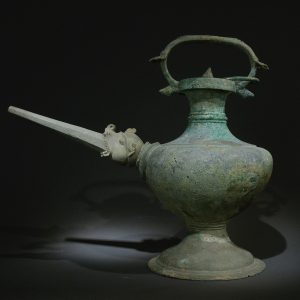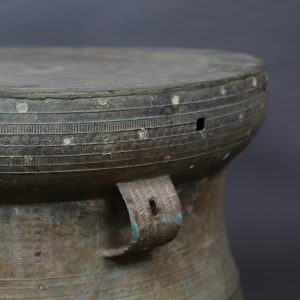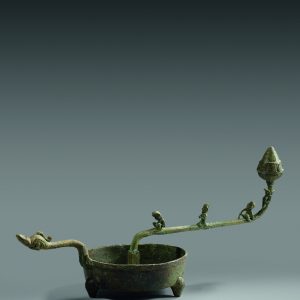Musician
25 000,00€
Bronze
Vietnam
Dong Son culture, 1st – 2nd century A.D.
H. 11.5 cm or 4 ¾ in
Description
This represents a man sitting in a sort of chair with feet made of or wrapped in rope and the seat between two posts. The ring over his head was meant for hanging the object, either for use as a weight for scales or simply as a pendant. His hair is in long braids wound like snail shells. It’s interesting to note that, in spite of the natural corrosion that accumulated over the years, those braids are still clearly visible.
The man is naked except for a loincloth, and his body is decorated with spirals characteristic of Dongson culture – Banchiang or Battambang style for the city in Cambodia near the great Tonlé Sap Lake. His shoulders, chest and legs are decorated. He’s holding a wind instrument called a khen. It is made up of sort of woven pouch from which run several bamboo pipes. The instrument is actually a type of mouth organ found throughout Southeast Asia in the Bronze Age, in the Dongson and Dian cultures.
The very fine impression of the woven seat of the chair leads us to conclude that this bronze was cast using the lost-wax technique. The musician is covered by a thin green patina. Slight crazing on the arms and legs indicates the presence of iron in the alloy. X-ray analysis confirmed its excellent conservation, as both texture and density are uniform with no trace of breakage or restoration.
The shape of the musician’s head doesn’t resemble that of Dongson human figures. Likewise, his hairdo and sturdy build are more similar to those of central or southern Indochina, regions with close relations to Dongson and Banchiang cultures. It could be of pre-Funan culture dating from the 1st or 2nd century. Excavations in the Lang Vac cemetery in Vietnam and Ban Chiang in Thailand, as well as Charles Higham’s recent digs along the Mun River in northern Thailand, have unearthed numerous objects decorated with spirals. This would suggest a broader context for that culture to which these human figures might belong.
There are comparable pieces in several private collections. The first object of this sort was found in Laos by Mrs. Madeleine Colani, a French archeologist from the French School of the Far East in Hanoi (EFAO). It was made of bronze and represented a young man standing. That piece may be in the reserves of the National Museum of Vietnamese History in Hanoi. A plaster copy was made by Swedish archeologist Johan Anderssen during his stay in Hanoi in 1937. The copy is kept in the reserves of the Museum of Far Eastern Arts (MAEE) in Stockholm. It should also be mentioned that an extremely similar piece, minus the musical instrument, is in the collection of Dr. Kurt Sandmair in Munich, and was on display until recently at the Museum of Asian Arts in Berlin. This piece was shown in Martin Doustar’s publication “Art of the Bronze Age in Southeast Asia” in 2013.
Provenance: Private collection, Belgium.
Art Loss Register Certificate, ref. S00097034
- Monique Crick, Art ancien du Viêt Nam, Bronzes et céramiques, 5 Continents (Ed), Collections Baur, Musée des Arts d’Extrême-Orient, Genève, 2008.
- Nancy Tingley, Arts of Ancient Vietnam, From River Plain to Open Sea, Asia Society, The Museum of Fine Arts, Houston.
- Charles Higham, The Bronze Age of Southeast Asia, Cambridge University Press, 1996.

